

James Wong
2025 Mazda CX-5 G25 Touring AWD review
5 Days Ago
According to the people that built it, this drivetrain is the most complex thing you can imagine to have in a car. So how does it work?

Publisher


Publisher
Gone is the rumbling, angry 4.0-litre twin-turbo V8, and in is a super-fast, efficient and incredibly complex hybrid power unit. We speak to the folks at AMG to get a better understanding of how the hybrid and four-cylinder turbocharged engine work together.
The all-new, all-wheel drive Mercedes-AMG C 63 S E Performance (to give it its full name) takes what was an icon of V8 motoring in the previous models and transforms it into what will likely become the new benchmark in hybrid performance.
You can read our review of the car here, but its performance aside, how does the whole power unit actually work in detail? We travelled all the way to Spain to talk to the people who built what is now the most powerful C-Class ever made.
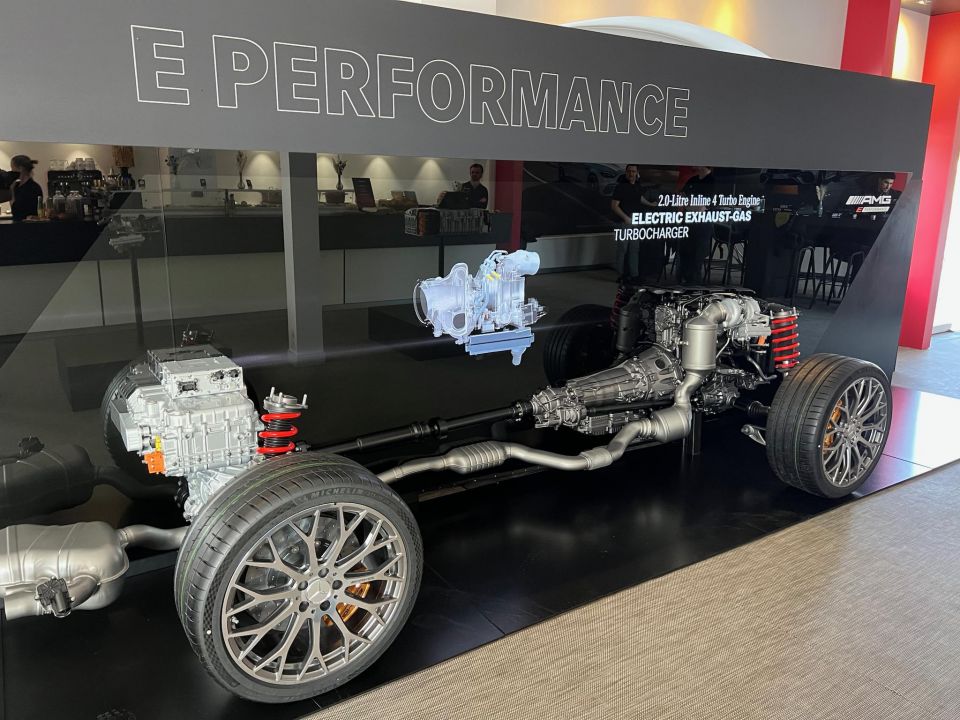
“The drivetrain is the most complex thing you can imagine to have in a car!”
Those are the first words that Rene Szczepek, AMG’s head development driving dynamics engineer, said to CarExpert at the launch of the new C63 last month. Not a bad intro, and not an exaggeration.
The folks at AMG have been working on this new hybrid C63 since 2016 and the complexity of the powertrain makes this leap far greater than any previous generational jump. Nonetheless, there is something a little weird about listening to a C63 turn on and drive off… in complete silence.
This is the iconic hooligan car, what has the world come to? The answer is multidimensional, because this is the worst-sounding but also the best C63 we have ever driven.
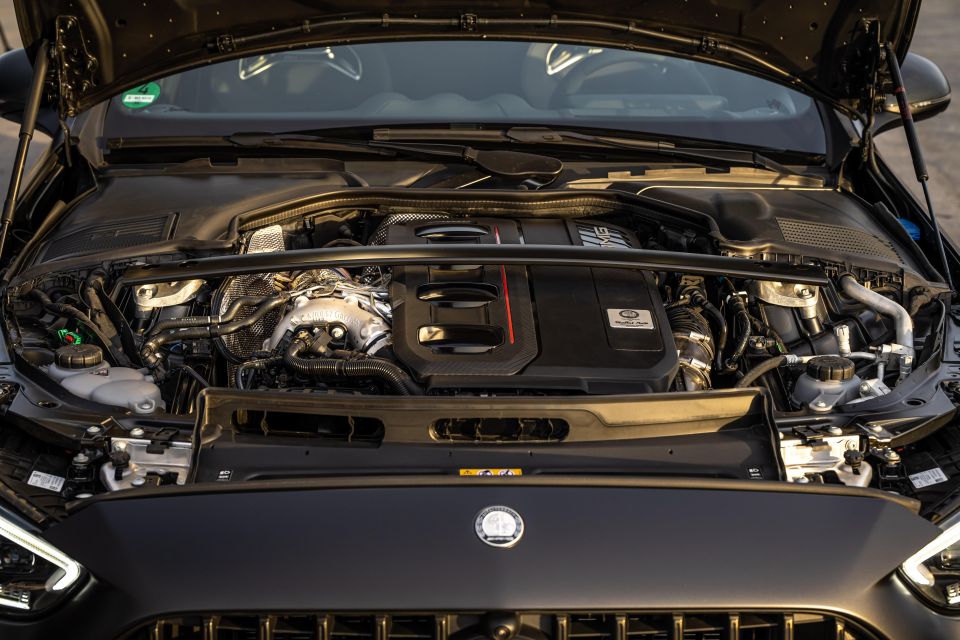
Although this author has been writing about cars for over 15 years and driven thousands, the complexity of modern cars, especially the new electrified performance vehicles, is an all-new field that even has us baffled at times.
The basics for the 2023 Mercedes-AMG C63 S E are a 2.0-litre inline four-cylinder turbocharged engine borrowed and refined from the A45 AMG, which has 350kW of power and 545Nm of torque in the C63.
That in itself is incredibly impressive given the old twin-turbo V8 had 375kW of power and 750Nm of torque and this engine is half the size.
Add in the new party trick, being the “permanently excited” synchronous motor with 150kW of power and 320Nm of torque and all of sudden you have a car that has 500kW of power and a ridiculous 1020Nm of torque.

“It’s a sum of the numbers, absolutely, and they are both hitting the drivetrain in different places,” Szczepek told CarExpert when we questioned him on the simplicity of just adding the performance numbers of the two performance units together for the total output.
“The torque isn’t that easy to sum up, this is why it comes to 1000Nm and something because you need to have a point where you are reflecting on, to measure, and we have chosen as a torque output [at] the crank of the engine.”
Let’s take a step back for a moment and just fathom 500kW of power and 1020Nm in a C-Class. Mercedes-AMG says the car can go from 0-100km/h in 3.4 seconds and our testing showed it can do that day in, day out. Yes it has a kerb weight of 2165kg, but the performance figures are a huge step up.
We are talking figures that are quicker than supercars that were on sale recently or are still on sale!
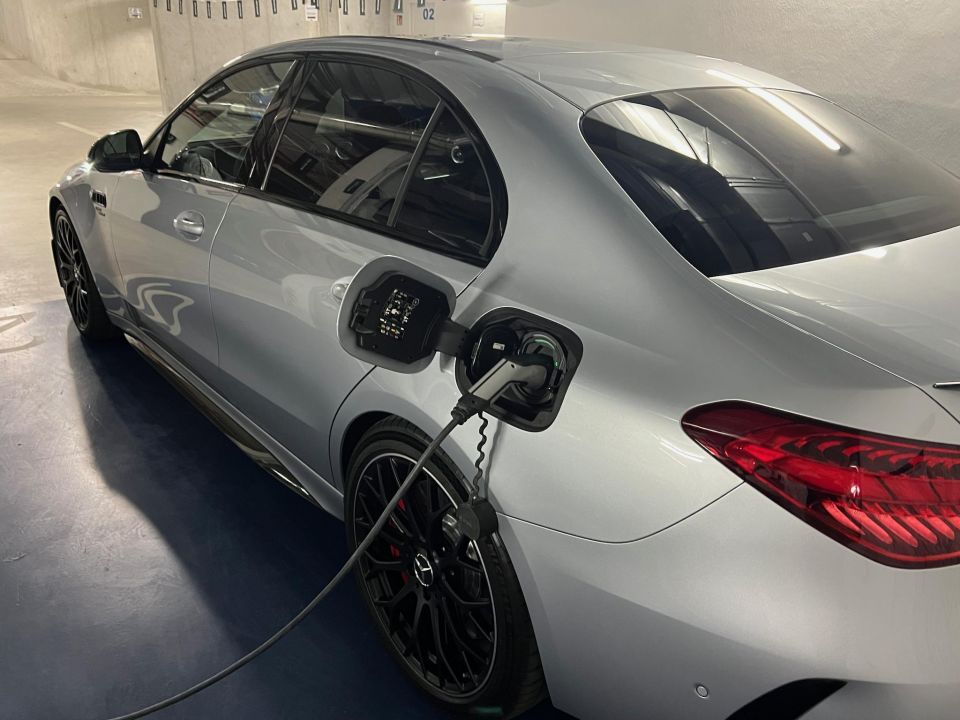
“If you think about the 1920s, you think about the big engines that had to be built for a car, so a 16-litre of stroke to have a power output of 120hp!,” said Mr Szczepek.
“Why is that? They didn’t get their air in at an efficient way, and they didn’t get their air out in an efficient way, and they were not able to use petrol to be sprayed in an efficient way, and all those developments going on [since then], and now we have a 2.0L engine with Formula 1 technology and reducing the stroke and having way more power output.”
For those wondering, the upcoming Mercedes-AMG C43 does indeed use the same 2.0-litre four-cylinder engine without the hybrid system but the turbocharger in the C63 S is significantly larger. In addition, the integrated electric motor is powered by a 400V high-voltage system (there’s a 48V system in the C43 model).
Before we get into the electric motor and its coupling, it’s important to realise this 2.0-litre turbo four isn’t your regular run of the mill engine. Apart from already being the most powerful four-cylinder engine in a mass-produced car, it has a set of new innovations in the C63.
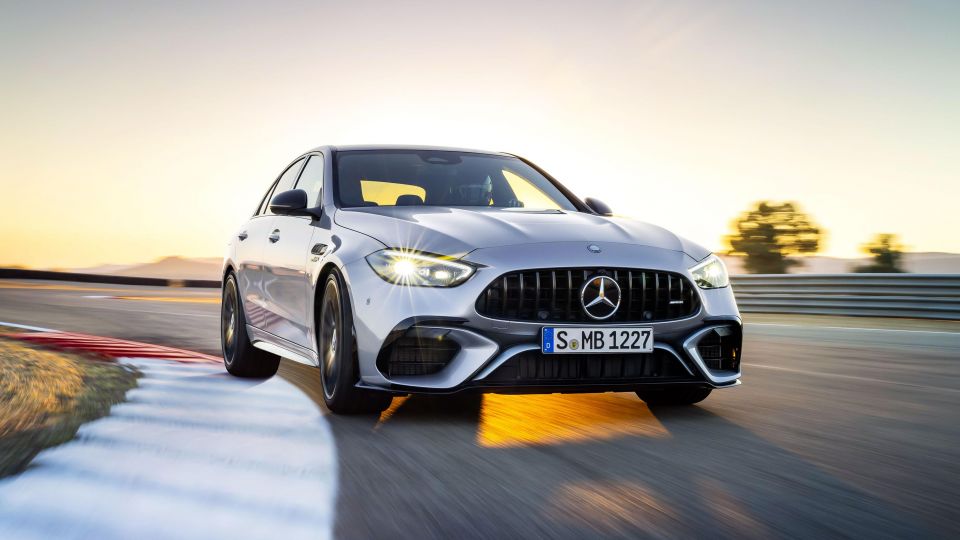
Firstly, there is an electric motor around four centimetres thin that is directly integrated on the turbocharger shaft between the turbine wheel on the exhaust side and the compressor wheel on the intake side. This means the turbocharger is not dependent on the exhaust gas flow to spin, basically a form of anti-lag that works both at low engine rpm and when the right foot is lifted. In other words, near maximum torque, all the time.
“Just the turbocharger itself is not just a turbocharger, we are now able to boost the turbine wheels to a certain rotation to boost up the engine and boost up the torque build up in very low revs,” added Mr Szczepek.
“As soon you go off the throttle, we are able to use the energy of the turbocharger turbine speed to get energy back into the battery. This is why we call it Formula 1 technology.”
Making use of the 400V on-board electrical system, the electric exhaust gas turbocharger can spin at up to 150,000rpm and in doing so, uses a cooling circuit of the engine to keep heat under control. Additional features of the M139 engine include peak combustion pressures of up to 160 bar with two-stage petrol injection.
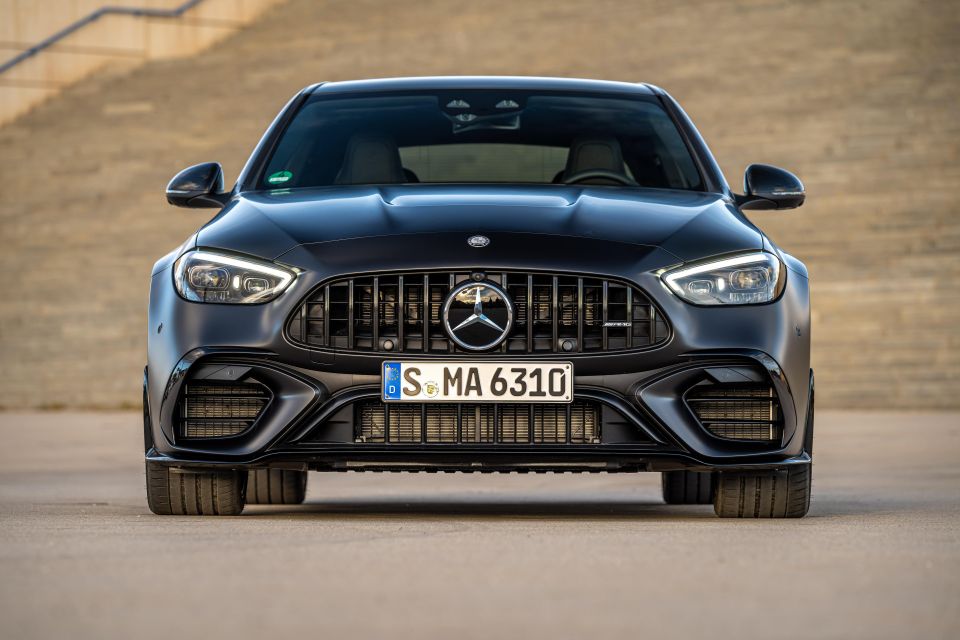
So how does the engine work with the electric system? Mercedes-AMG engineers had to completely reinvent their approach to making a performance car with the new hybrid C63.
“We know we can build fast cars for a track, but now we needed to prove that we can learn fast and build new competencies, we needed to learn as fast as possible and that is an ongoing process as the world is fast changing into electric cars,” said Mr Szczepek.
The C63 AMG has a 50:50 front:rear weight distribution and that is a result of the electric motor being positioned at the rear axle, coupled to an electrically shifted two-speed transmission. The 6.1kWh high-performance AMG battery (more here) is also located above the rear axle.
Add in what can only be described as a pretty complex electronically controlled limited-slip rear differential (LSD) and Mercedes-AMG calls the whole setup an electric drive unit (EDU).
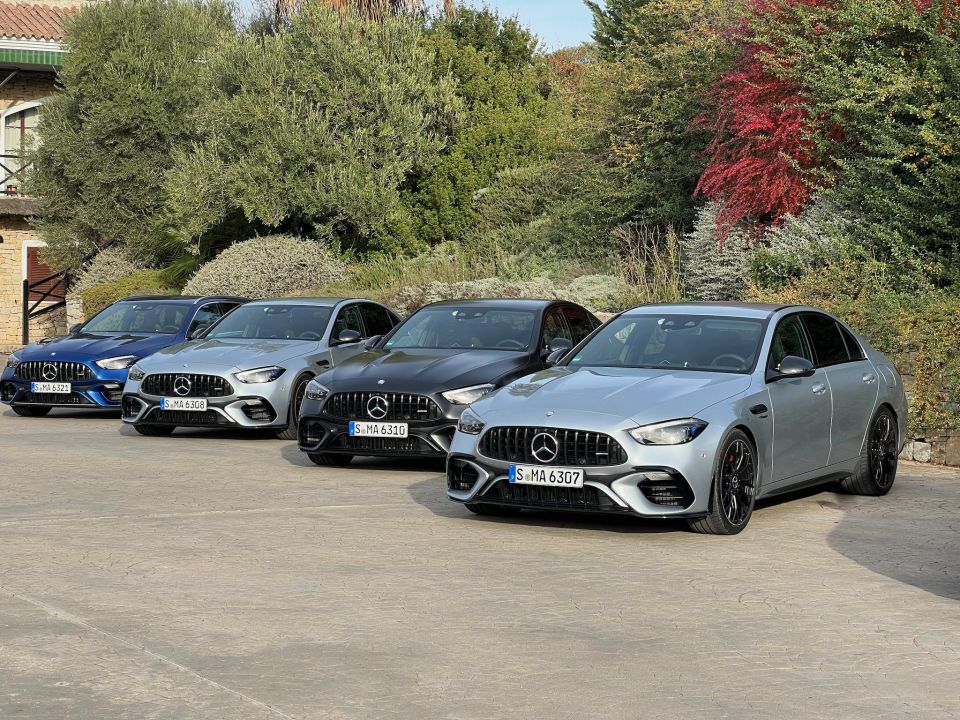
What this layout has resulted in is the ability to use both the engine and EDU for maximum acceleration and performance through AMG’s in-house all-wheel drive system. There’s maximum energy output (150kW and 320Nm) available for 10 seconds at a time when in qualifying or boosting mode, and up to half the electric output available for much longer in endurance mode.
The EDU has a two-speed transmission (in addition to the nine-speed standard gearbox that is coupled to the 2.0-litre engine), which shifts from first to second at around 140km/h when the electric motor hits 13,5000rpm.
As you can expect, it’s not as simple as that, with many varying situations causing it to behave differently. For example, if you happen to be in track mode (one of eight driving modes), the second gear will be maintained even if you drop below 140km/h just so that there is less change speed required when going flat out on a straight section again.
The battery might be small, but it’s deliberately done so not just for cooling but for packaging purposes. The C63 can only do 13km of electric-only driving.
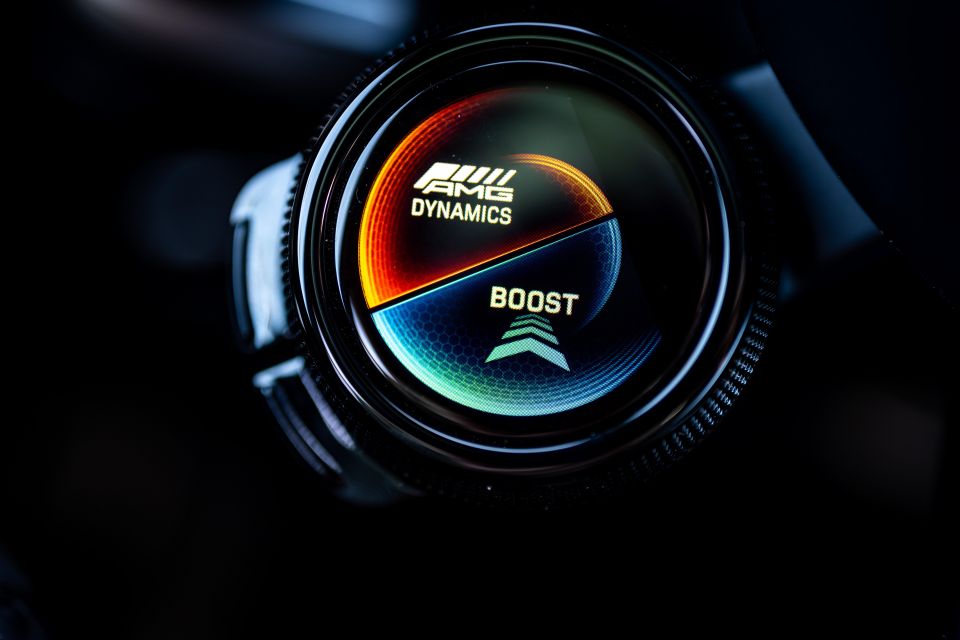
“The focus for the drivetrain is to be as energy efficient as possible. The battery is a small capacity, boosting into the LSD in the rear, not like the standard Mercedes, so behind the clutch but in front of the gearbox. So, we split it to not have all the torque in the gearbox so boost into the rear-axle differential,” said Mr Szczepek.
The electric motor pushes its might directly on the rear axle and can therefore convert its power more directly into drive without unnecessary energy loss. Szczepek admits the system is going to be pretty complicated to explain to most customers.
“It is quite complicated for sure, and it’s good that the customer is not into the development because it’s such a complex thing and you can imagine we had a lot of discussions about how to handle it and what perspective is the right one to get the complete package to fulfill the sort of customer.”
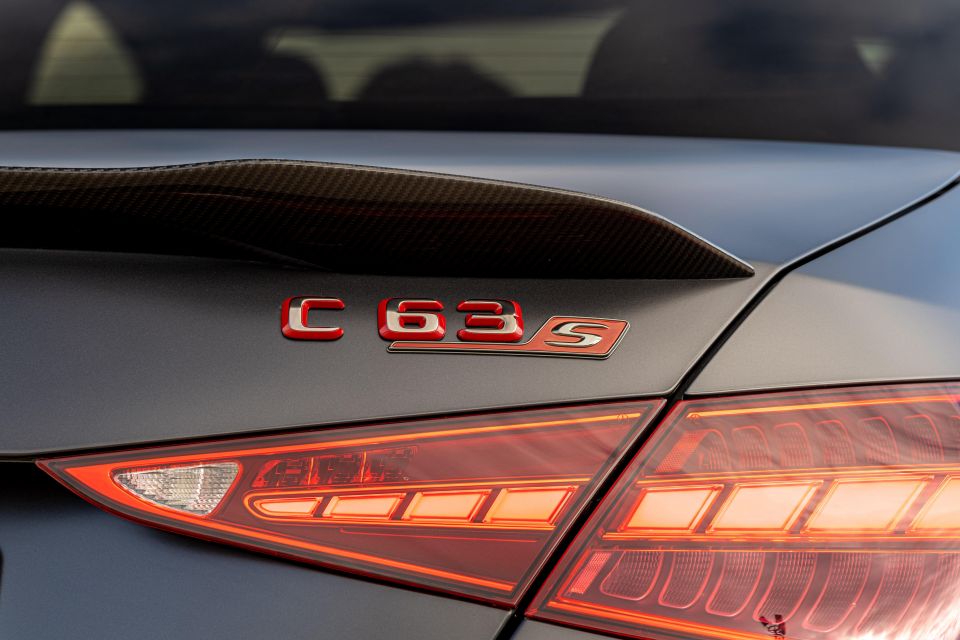
It even has a drift mode which the battery can boost for maximum burnout potential (the irony of using petrol saving efficient technology to shred rubber is not lost on us).
“[The C63 had to be] fun to drive as the main thing for the car. With all that, also be efficient and these two things are 180 degrees to each other,” Mr Szczepek acknowledged.
“But if you go back to F1 you need to have the efficiency in your systems to get it working so the way for us was to rethink hybrid system in a performance way and helping us on the way was that you need torque to go forward, get out of the pits, out of the corner in the way you like it, it’s why there is an LSD in it so you can rotate the car with that, we can find traction with that… you can’t take these things out and put it in another car and make it work, it works with this combination fitted together only.”
This is incredibly evident when we were going flat-chat at Ascari chasing German racing legend Bernd Schnieder, wondering how the C63 was able to get its power so precisely to the right wheel at the right time. AMG has built the vehicle with a mechanical connection for the fully variable all-wheel drive system, which uses a propeller shaft and the drive shafts for the front wheels.
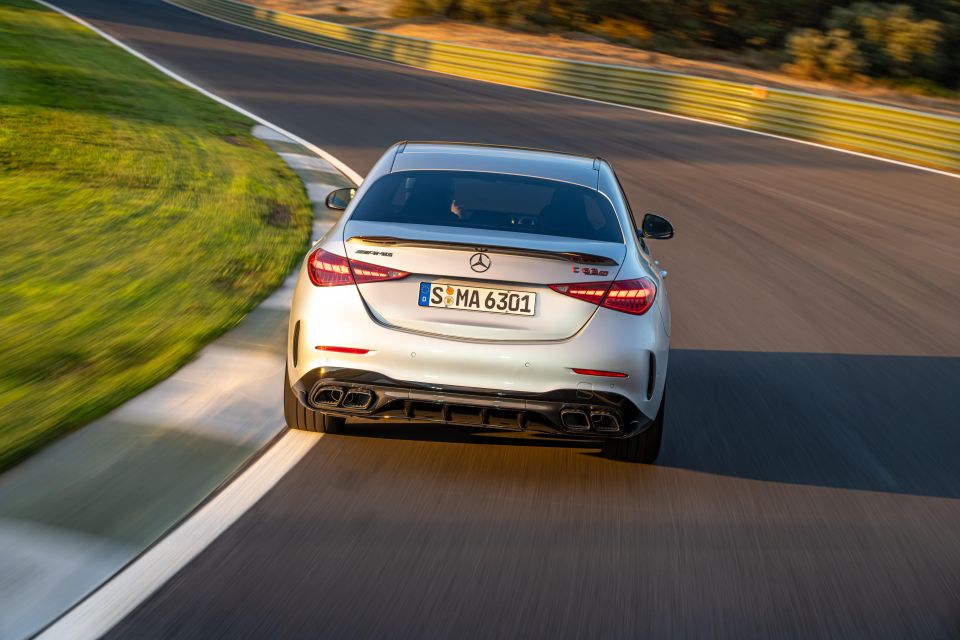
This means that if the rear tyres start to lose traction, the drive power of the electric motor is also transferred to the front wheels as needed for more traction.
It’s important to answer some serious questions that many AMG fans will have. For example, you might be wondering how the new C63 AMG works if the battery is low or starting to deplete? How does that work on track days, or mountain runs?
We can tell you from experience there is literally no battery or performance degradation in road-driving applications. We drove through some of the most spectacularly challenging mountain roads Spain had to offer for hours at a time – flat out – and there was never a moment where the car or the battery failed to deliver intoxicating amount of power and torque. The trick to that is battery regeneration.
AMG has developed a super cooling technology for its battery so recuperation and energy recovery is fast and without battery degradation, with the battery cells kept around 45 degrees (more on the battery here).
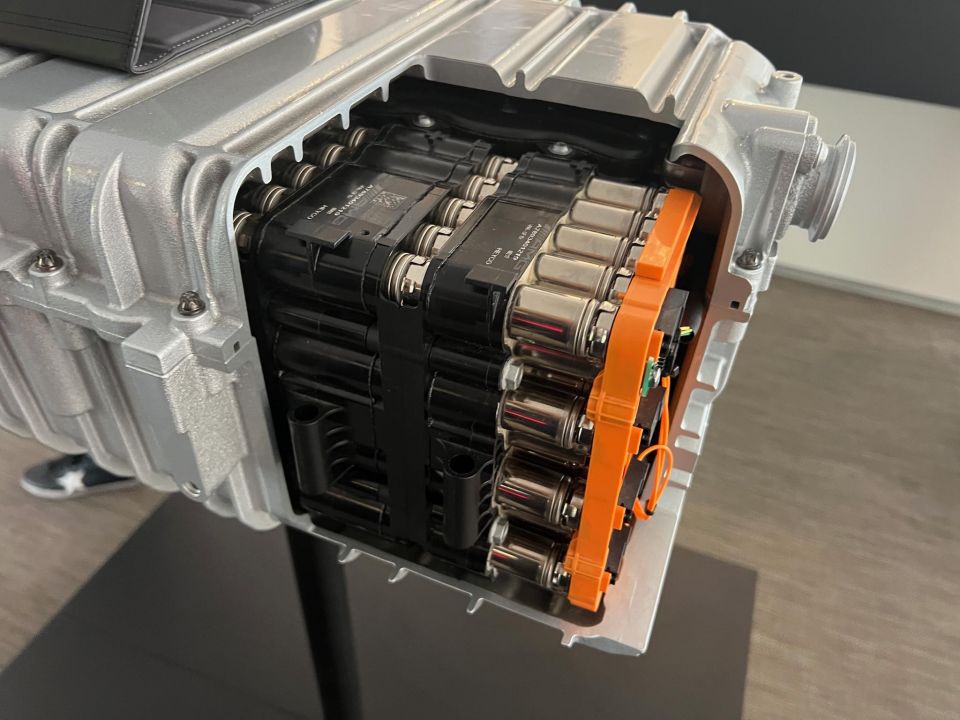
There are four different levels of energy recuperation which you can select at any time on the steering wheel (very much like an F1 car).
Level 0: If you absolutely do not want the battery to recharge, you can basically turn off recuperation and if you lift off the throttle, it rolls smoothly and consistently as any normal car would. Almost as if it’s in neutral.
Level 1: If you leave the C63 to its own devices, this is the level the vehicle will be in most of the time. As the default setting, we couldn’t really feel a level of regeneration and Mercedes-AMG says this about the same as the deceleration of a conventional combustion engine with the clutch engaged.
Level 2: If you are about to have a little ego battle at the next red light (which you will most likely win) or are set to do a fast lap, you can turn the regeneration up to level 2 which uses the brake system to recoup a significant amount of energy.
Level 3: Puts the AMG into ‘one-pedal’ mode, so you don’t need to use the brakes at all in normal conditions as the C63 will harness a great deal of energy when you lift off. According to the German brand, up to 100kW of power can be fed back into the battery (remember the battery is only 6.1kWh).
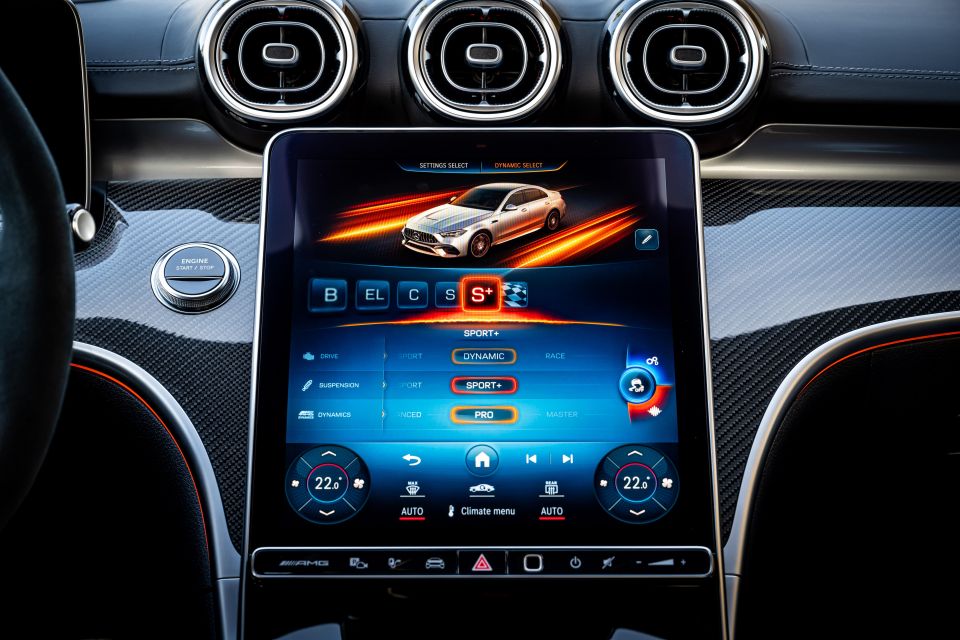
On the racetrack and in RACE mode, the recuperation level is set to level 1 and we found ourselves able to get a seemingly unlimited number of laps out of the car without feeling any performance degradation. The battery regeneration is so rapid and the battery capacity is so small that you will need to do multiple qualifying style laps before considering a regeneration lap.
Despite our very best attempts to find a battery performance issue, we could demand the 10-second maximum boost function at any point repeatedly through Ascari’s long track, lap after lap after lap. We ran out of physical will and endurance before the battery ran out of charge.
We suspect if we did perhaps 10 or so consecutive ultra-fast qualifying laps, the battery would be more receptive to a recuperation lap.
Formula 1 fans will know this is very similar to how F1 cars work. Whereby in qualifying mode, the cars harness energy to deploy for a super-fast lap, or during an endurance race, drivers will use some laps to fully recharge their battery to deploy in areas to either overtake or defend from an overtake.
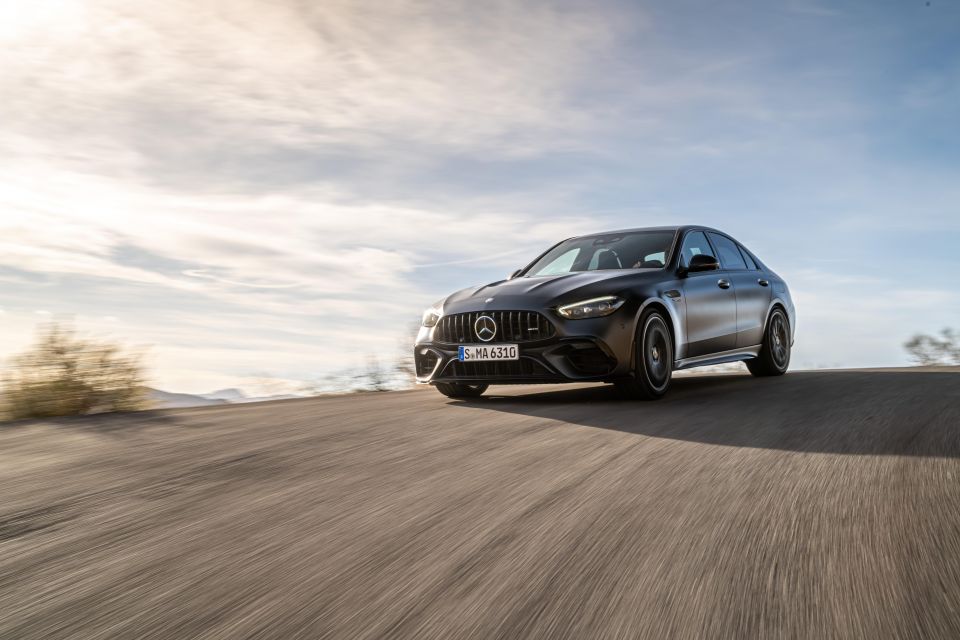
Ultimately, you can put the vehicle in qualifying mode and set your absolute fastest lap and then leave it in endurance mode to do multiple rapid laps at a time. For the everyday track hero or even those who take their track days seriously, the hybrid system is certainly more of a benefit rather than a hindrance – despite the weight.
There are an incredible eight driving modes for the new C63 and each one of them is then further customisable. We briefly sum them up below:
Electric: As the name suggests, this is pure electric drive for around 13km and up to 125km/h in AWD. This is how the car starts and you can leave your garage in complete silence and return in the same way. If you happen to floor the accelerator the AMG will switch to Comfort and the engine turns on.
Comfort: Still able to run in electric-only when required but the engine is at hand to jump in much quicker. It limits the boost power output of the electric system to just 25 per cent. The rest of the car’s settings are all set to soft in terms of suspension, steering wheel etc.
Battery Hold: If you want to preserve battery power for future use, you enter this mode and the C63 will make sure whatever battery capacity you currently have, will remain. Ideal if you want to use pure electric drive when you enter a busy suburban area and wish to preserve the charge.
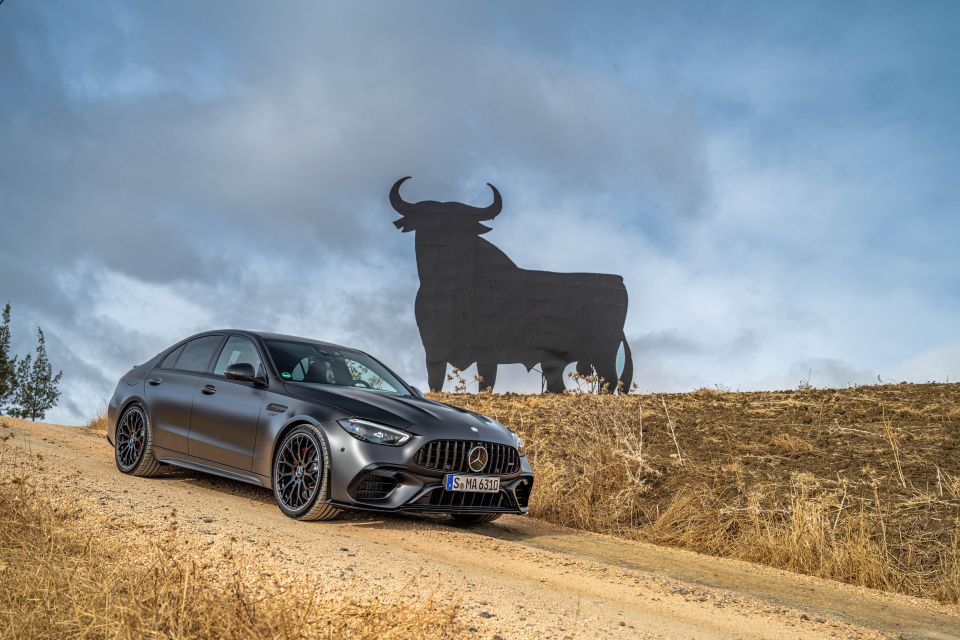
Sport: Things start to get interesting here with boost from the electric motor enabled, up to around 65 per cent. The accelerator response is sharper while the suspension starts to firm up, as does the steering feel.
Sport+: Pushing the boost function to 80 per cent and everything is sharper yet again with the suspension much firmer than Sport and the steering feeling heavier. The four-cylinder unit will even enter targeted torque intervention mode during upshifts, with cylinder deactivation for optimum shift times.
RACE: This mode really is for the track, as it gives the maximum performance of everything it has. Electric boost power of the motor is still set at 80 per cent but this is where Boost Mode comes in. It is then limited to a maximum of 30 per cent of battery energy per attempt in order to conserve energy reserves.
These can be used specifically on the racetrack for spontaneous power request via kick-down and 100 per cent boost power – for example, for an acceleration manoeuvre or powerful acceleration out of corners.
Slippery: A wet mode tuned for slippery roads, with reduced power input and a flat torque curve. Electric-only driving and recuperation adjustment are deactivated.
Individual: This mode makes far less sense in this car than the previous model because each one of the modes above allow for a certain level of customisation (so Sport+ can use Sport suspension and Sport+ engine response) but if you love one particular setup that is a mixture of the above, you can mix and match and save it here.

How does the new C63 sound?
You can watch the video below but it’s fair to say, it sounds nothing like a V8, either on idle or as it drives past.
The vehicle recorded here was a European model with a petrol particulate filter, we are hopeful that Australian delivered vehicles will sound better without the unit.
Although there is no confirmation yet as to whether we get the system or not.
Does the new C63 have fake sound?
Yes and no. In pure EV model the AMG makes a legally required sound for pedestrians (up to around 30km/h). This is done via an external speaker at the front and a soundbar with two speakers at the rear. If you want to hear this all time, you can turn it on for all speeds.
In the sports settings, AMG says the real sound of the combustion engine is picked up via a pressure sensor in the exhaust system and then enhanced (amplified) and pumped back into the cabin via the speakers. The same noise is further amplified using the same exterior speakers.
All in the all the 2023 Mercedes-AMG C 63 S E Performance has the most complicated, highest performing powertrain in its category.
Where expert car reviews meet expert car buying – CarExpert gives you trusted advice, personalised service and real savings on your next new car.
Alborz is the founder of CarAdvice (sold to Nine and now Drive) and co-founder of CarExpert. He is an honourary adjunct professor & entrepreneur in residence at the University of QLD. He loves naturally-aspirated V8s, V10s and V12s and is in denial about the impending death of the internal combustion engine. The best way to reach him is via Instagram.


James Wong
5 Days Ago


Max Davies
4 Days Ago


Josh Nevett
3 Days Ago


Josh Nevett
2 Days Ago


Paul Maric
1 Day Ago


Damion Smy
16 Hours Ago